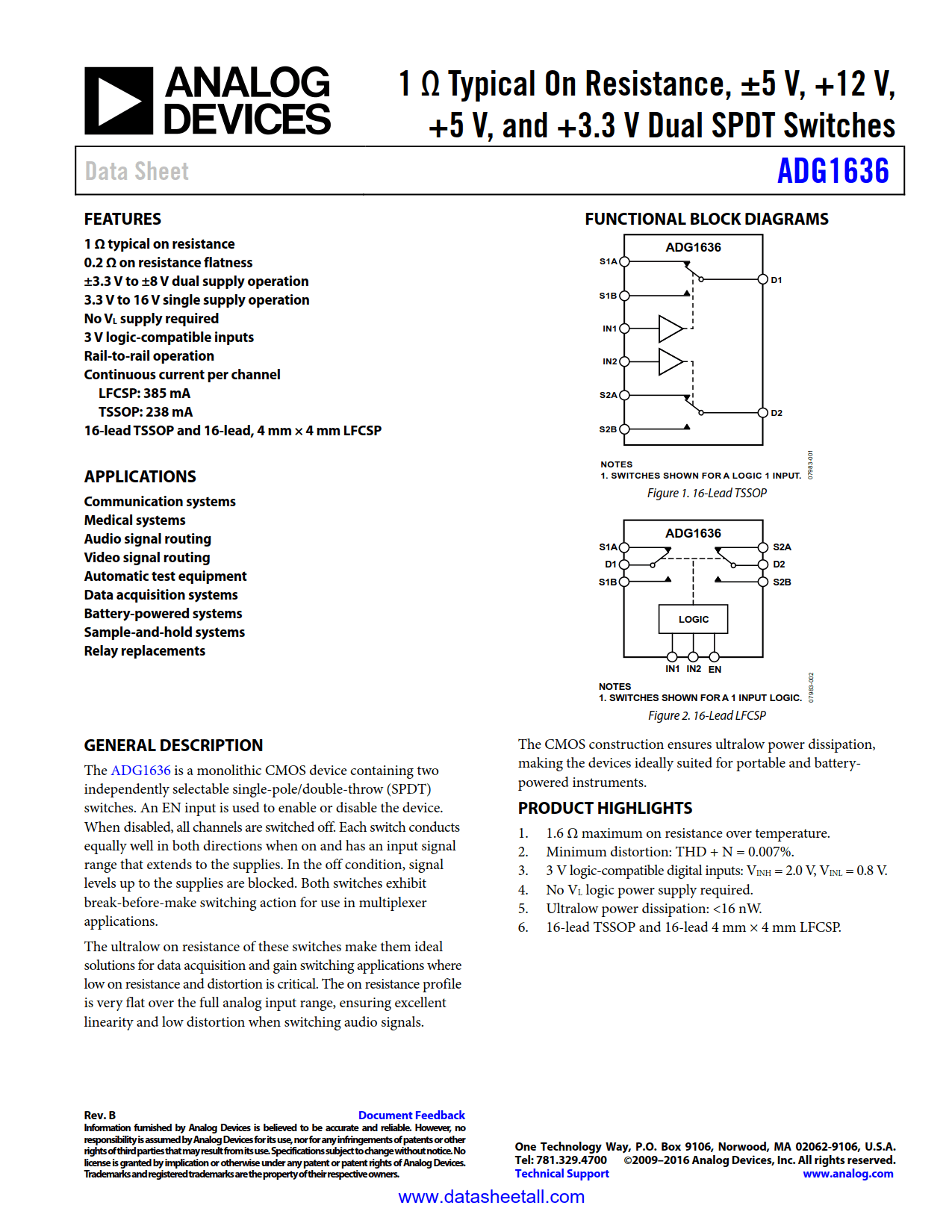
ADG1636 Datasheet
1 Ω Typical On Resistance, ±5 V, +12 V, +5 V, and +3.3 V Dual SPDT Switches

1 Ω Typical On Resistance, ±5 V, +12 V, +5 V, and +3.3 V Dual SPDT Switches
| Part No. | In Stock | Price | Packaging | SPQ | Marking | MSL | Pins | Temp Range | Package Description |
The ADG1636 is a monolithic CMOS device containing two independently selectable single-pole/double-throw (SPDT) switches. An EN input is used to enable or disable the device. When disabled, all channels are switched off. Each switch conducts equally well in both directions when on and has an input signal range that extends to the supplies. In the off condition, signal levels up to the supplies are blocked. Both switches exhibit break-before-make switching action for use in multiplexer applications.
The ultralow on resistance of these switches make them ideal solutions for data acquisition and gain switching applications where low on resistance and distortion is critical. The on resistance profile is very flat over the full analog input range, ensuring excellent linearity and low distortion when switching audio signals.
The CMOS construction ensures ultralow power dissipation, making the devices ideally suited for portable and battery-powered instruments.